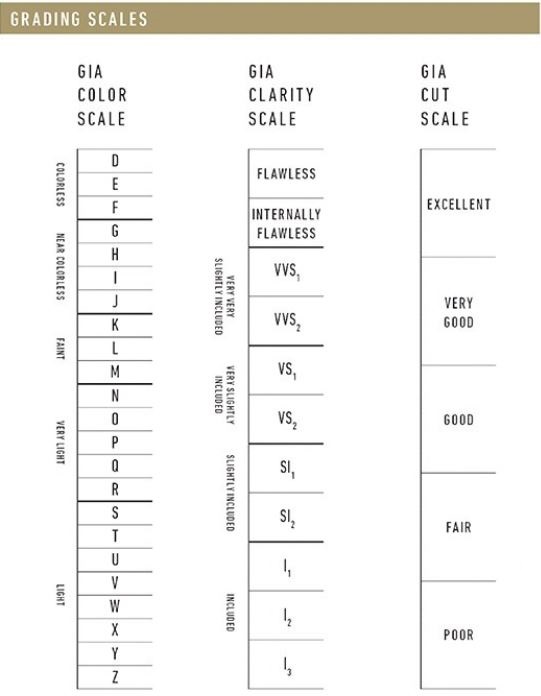At present, GIA is the leading certification and authentication authority, its rating system and diamond identification certificate providing an accurate and objective basis for consumers who are going to buy diamonds. The following is a sample of GIA certificate; we explain in detail the contents of the GIA certificate.
The main difference between GIA's colored diamond certificate and colorless diamond certificate is the color grading, the natural color of the color diamond is much more complex than the colorless diamonds. Below are the descriptions for the colorless diamond certificate:

Colorless certificate.

General information.
Date: Date diamond was examined by GIA.
Report Number: Unique GIA report number registered in GIA's extensive global database.
Shape & Cutting Style: The outline of the diamond (shape) and the pattern of the facet arrangement (cutting style).
Measurements: Diamond dimensions listed as "minimum diameter - maximum diameter x depth" for round diamonds and "length x width x depth" for fancy-shaped diamonds.

Grading results.
Carat Weight: Weight given in carats, recorded to the nearest hundredth of a carat. 1.00 carat is equal to 1/5 of a gram.
Color Grade: The absence of color ranging from colorless to light yellow or brown when compared to GIA Master Color Comparison Diamonds. Graded on a D-to-Z scale. If "*" appears next to the color grade, a color treatment was detected.
Clarity Grade: The relative absence of inclusions and blemishes. Graded on a scale from Flawless to Included based on size, nature, number, position, and relief of characteristics visible under 10x magnification.
Cut Grade: For standard, D-to-Z color, round brilliant diamonds. Cut grade incorporates the aspects of face-up appearance, design, and craftsmanship. Graded on a scale from Excellent to Poor.

Additional grading information.
Polish: Smoothness of the diamond's surface, assessed on a scale ranging from Excellent to Poor.
Symmetry: Exactness of the diamond's outline, and the shape, placement, and alignment of its facets, assessed on a scale ranging from Excellent to Poor.
Fluorescence: Strength and color of the diamond when viewed under long-wave ultraviolet light. A fluorescence description of "none" represents a range of fluorescence from Indiscernible to Very Faint. Used for identification purposes.
Inscription: Any text, symbols, logos, or a unique GIA report number inscribed on the diamond's girdle.

Diamond laser inscription - The GIA diamond report number will be inscribed in the girdle.
Comments: Additional identifying characteristics or features that are not otherwise represented on the report. If a treatment is detected, such as laser drilling, it would be described here.

Proportion diagram.
Proportion Diagram: Graphic profile representation of the diamond's actual proportions.

Plotted diagram.
Plotted Diagram: Approximates the shape and cutting style of the diamond. Symbols indicate the type or nature, position, and the approximate size of a clarity characteristic.
Key To Symbols: Lists the characteristics and symbols shown on the plotting diagram, if present

GIA color, clarity & cut scales.
GIA Color Scale: Illustrates the GIA Color grades and their relative positions in the GIA Diamond Color Grading System.
GIA Clarity Scale: Illustrates the GIA Clarity grades and their relative positions in the GIA Diamond Clarity Grading System.
GIA Cut Scale: Illustrates the GIA Cut grades and their relative position in the GIA Diamond Cut Grading System. Available for standard round brilliant cut diamonds in the D-to-Z color range and Flawless-to-I3 clarity range.

Other features.
Security Features: Microprinting, security screens, watermarks, a two-dimensional barcode, a hologram, and sheet numbering safeguard report integrity and facilitate document authentication.
QR Code: A two-dimensional barcode that, when scanned, verifies data on the report against the GIA database.